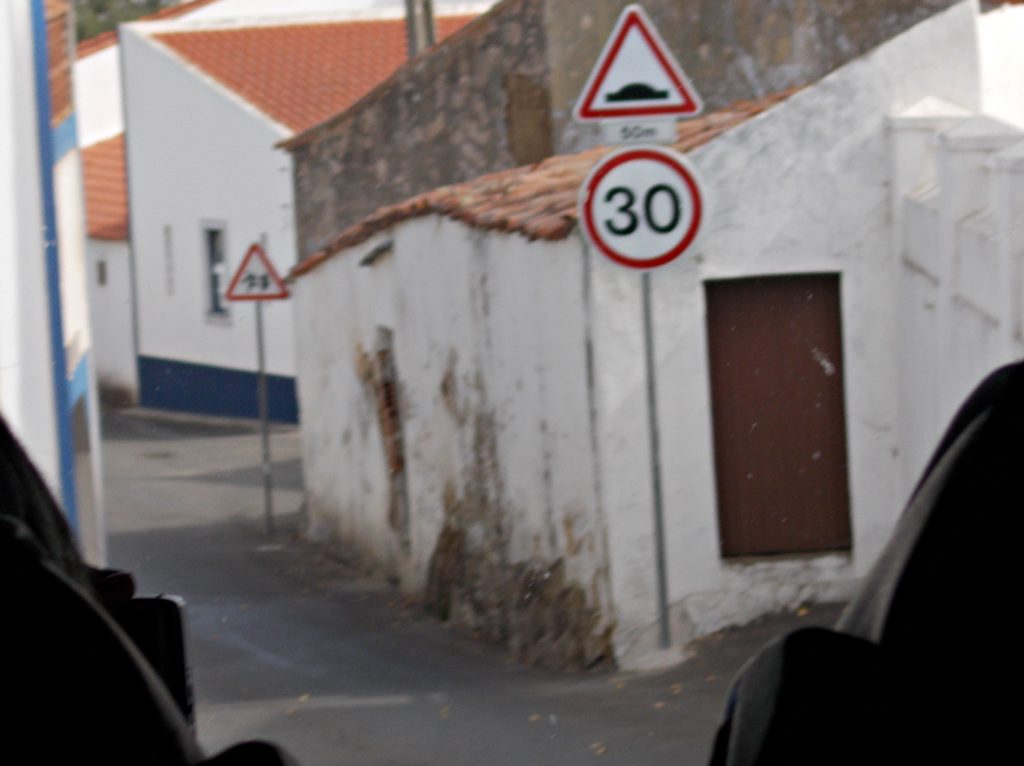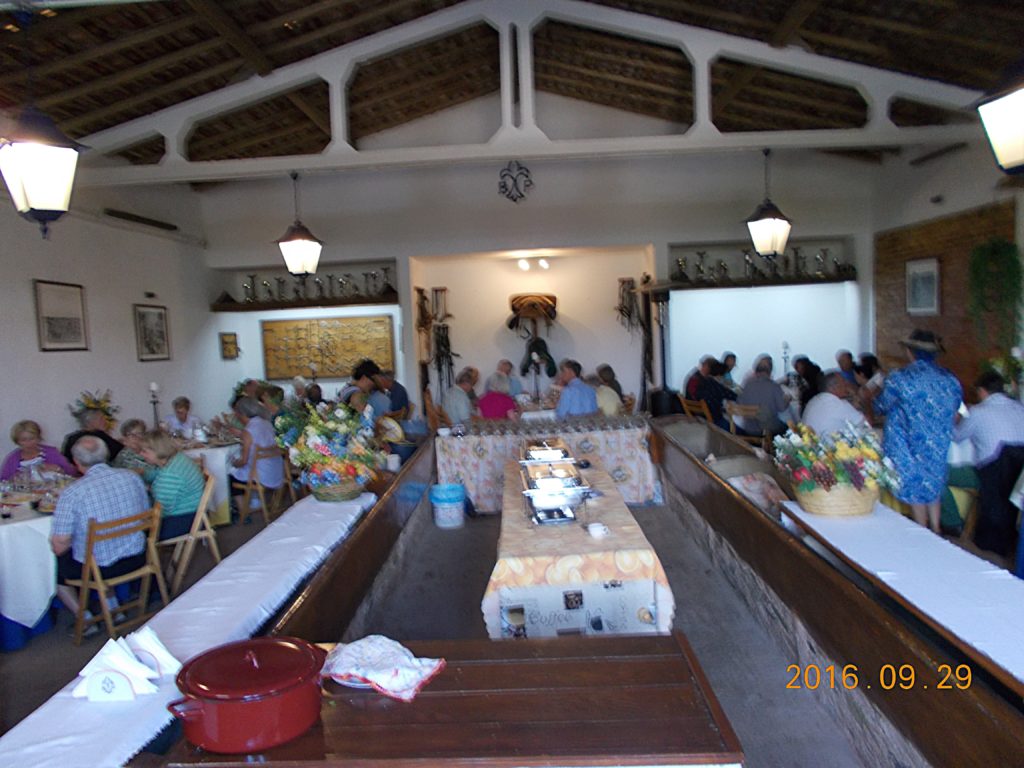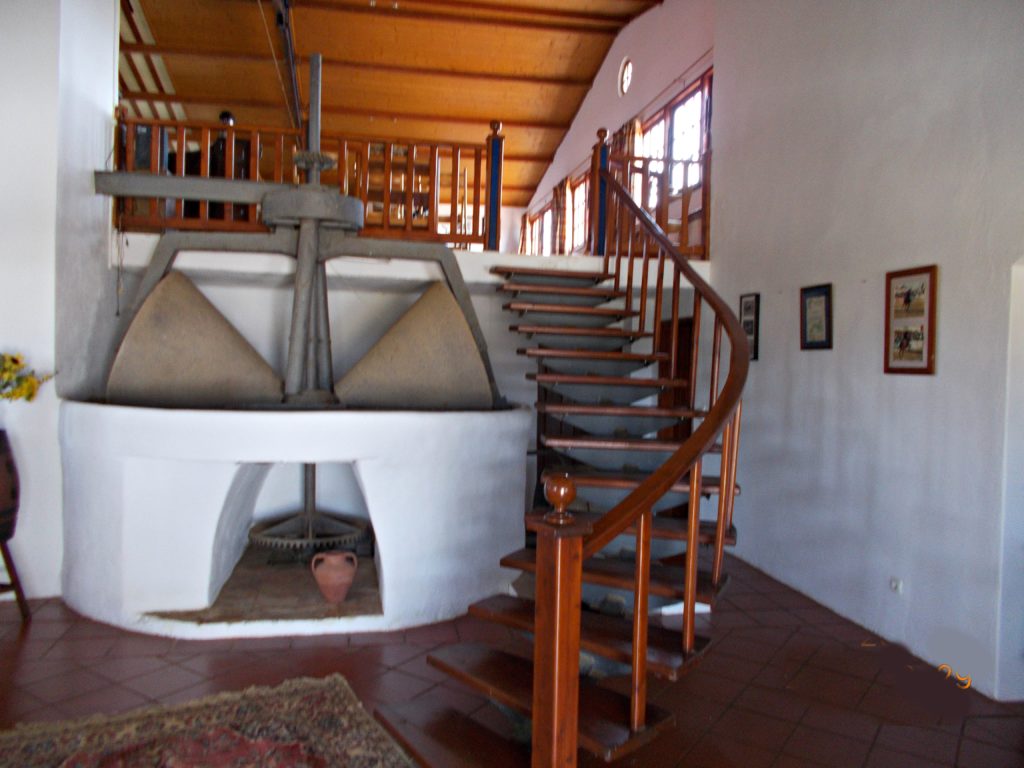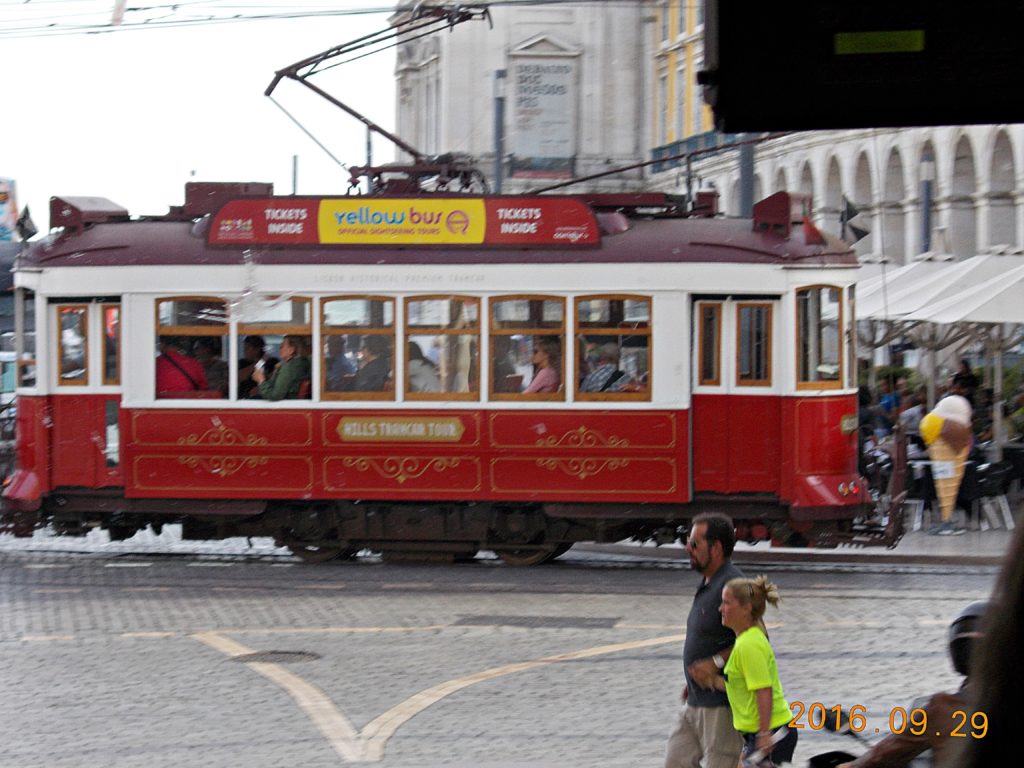Iberian Adventure – Page 13
Westward Ho!
Today is Day 12. We leave Seville heading west to Portugal, but first we must say “Hello and Goodbye” to some very important people in Spanish history:

That’s right!
Isabella, Ferdinand, and Christopher Columbus. Where would we be without them?
Isabella I (1451 – 1504) reigned as Queen of Castile from 1474 until her death. Her marriage to Ferdinand II of Aragon became the basis for the political unification of Spain under their grandson, Charles 1.
After a struggle to claim her right to the throne, she reorganized the governmental system, brought the crime rate to the lowest it had been in years, and unburdened the kingdom of the enormous debt her brother had left behind. Her reforms and those she made with her husband had an influence that extended well beyond the borders of their united kingdoms.
Isabella and Ferdinand are known for completing the Reconquista, ordering conversion or exile of their Muslim and Jewish subjects, and for supporting and financing Christopher Columbus’ 1492 voyage that led to the opening of the New World and to the establishment of Spain as the first global power which dominated Europe and much of the world for more than a century.
Columbus (1451 – 1506) was an Italian explorer, navigator, and colonizer. Born in the Genoa and under the auspices of Isabella and Ferdinand, he completed, four voyages across the Atlantic Ocean. Those voyages and his efforts to establish settlements on the island of Hispanola initiated the permanent European colonization of the New World.
From the Spanish port of Palos, Italian explorer Columbus sets sail in command of three ships—the Santa Maria, the Pinta, and the Nina—on a journey to find a western sea route to China, India, and the fabled gold and spice islands of Asia. They found “The Americas” instead.
Together, they changed the western world forever!

We set off to the west as well. On our clean, comfortable bus headed for Portugal. Our driver, Manuel, was Portuguese (on the right). He made sure we were comfortable with many “technical breaks” plus water.

Somehow Manuel got us through some very narrow twisted village streets…
…and some narrow twisted dirt country roads.
Until we arrived at this Andalusia horse farm …
…where Juanjo was greeted by the owner of the farm and …
…two cooks bringing soup to the dining room where…
… we all enjoyed a nice lunch!
After lunch we went to a viewing gallery up the stairs past an old stone olive crushing press…

… where we saw several beautiful Andalusian horses the were raised on the farm.
The Andalusian, also known as the Pure Spanish Horse is a horse breed from the Iberian peninsular, where its ancestors have lived for thousands of years. The Andalusian has been recognized as an individual breed since the 15th century, and its conformation has changed very little over the centuries.
Throughout its history, it has been known for its prowess as a war horse, and was prized by the nobility. The breed was used as a tool of diplomacy by the Spanish government, and kings across Europe rode and owned Spanish horses.
During the 19th century, warfare, disease and crossbreeding reduced herd numbers dramatically, and despite some recovery in the late 19th century, the trend continued into the early 20th century. Exports of Andalusians from Spain were restricted until the 1960s, but the breed has since spread throughout the world, despite their low population. In 2010, there were more than 185,000 registered Andalusians worldwide.
Strongly built, and compact yet elegant, Andalusians have long, thick manes and tails. Their most commoncoay coor is gray, although they can be found in many other colors. They are known for their intelligence, sensitivity and docility.
Enough about horses?

We passed a lot of cork-oak groves on this stretch of the trip and we were all curious about the whole cork producing process. At a cork factory we stopped to look around.
Cork can be harvested every 9 years. The bark is cut loose from the tree with special axes in a way that the tree is not harmed. The year this is done is painted on the tree. This tree trunk was done in 2017. The branches above won’t be cut until 2022.

The bark is 1 to 2 inches thick. It is stacked and then quickly boiled to kill any bugs, etc.. dried, sawed into cork stopper width strips, punched edge-wise into a stopper, washed again, dried, and graded according to quality, and finally printed with logos and then bagged and sold.
Portugal is the worlds largest cork producer with Spain being second.
Cork has many other uses: fishing buoys, sandals, flooring, insulation, and even coffins and roof tiles. I bought a wallet made from cork. It seems very durable!

We finally arrived in Lisbon (Lisboa) Portugal. The downtown was busy and bustling, but the city itself seemed a little worn.

Some of the building facades needed painting.

But some were really nicely finished. It seems that Lisbon is a “work in progress” and just needs funding.

The old street cars added a nice touch!

This was our “Mundial Hotel” (4 Star) in the center of the Rossio district on the Plaza de Pedro IV. It was quite handy to food markets and stores (I bought my cork wallet there.).
 Across the street from our hotel is a beautiful fountain and a statue of Pedro IV (somewhat shortened).
Across the street from our hotel is a beautiful fountain and a statue of Pedro IV (somewhat shortened).
This plaza has been the setting of popular revolts and celebrations, bullfights and executions, and is now a preferred meeting place of Lisbon natives and tourists alike.

In fact, many of us went to food stalls set up in tents in a nearby plaza for dinner. Lots of bread, ham, cheese, and sausages there.
Go To Page 14



















